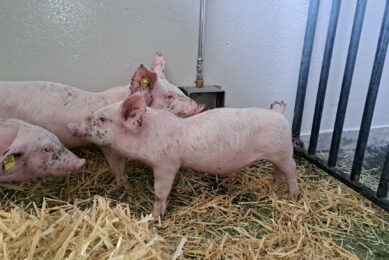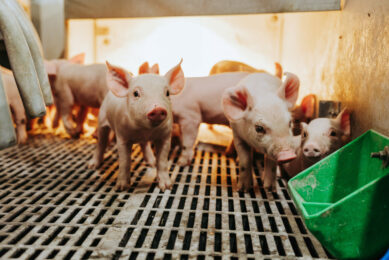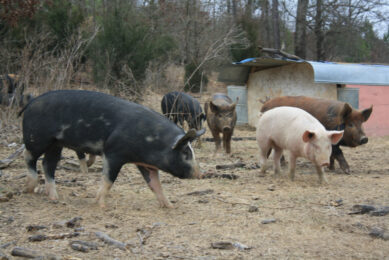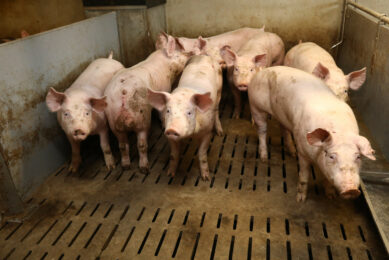How is PEDv controlled and prevented in the US?
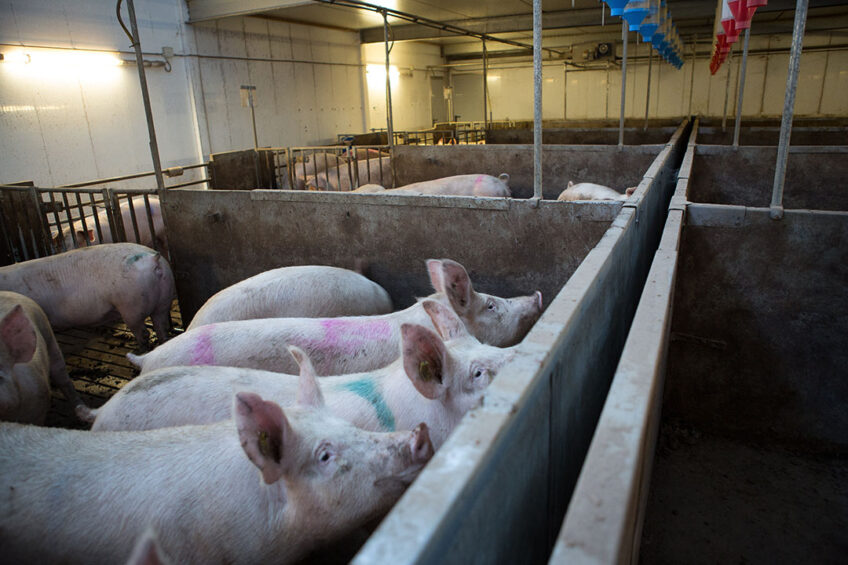
Porcine Epidemic Diarrhoea virus (PEDv) has a big economic impact on the swine industry in the US. What does the country do to control and prevent its spread?
What is PEDv?
Porcine Epidemic Diarrhoea virus (PEDv) is a coronavirus causing atrophic enteritis of the intestine. This leads to malabsorption and consequently acute diarrhoea, vomiting, dehydration and high mortality (80-100%) in neonatal piglets. In older pigs, the disease is mostly manifested by acute transient diarrhoea with high morbidity and low mortality. However, poor growth, low feed conversion and slight increase in mortality has been reported in growing pigs.
The severity of the virus can vary widely and is dependent on previous exposure and the immunological and epidemiologic status of the farm, region, or area affected. PEDv has been present in the Europe and Asia for several decades. In the US, the virus was first reported in 2013. Within months, the virus had spread rapidly nationwide, causing significant economic losses.
Economic impact of PEDv in pigs
The economic impact includes a high mortality rate in piglets, reduced volumes of available pig and hog supplies, and a decrease in annual returns for packers, processors, distributors, and retailers. According to the United States Department of Agriculture (USDA), despite federal, state, and industry actions since May 2013, the virus has persisted and even spread. It is now detected in 27 states. This makes it essential to set up preventive and control strategies to decrease the negative impacts of the disease on pig welfare and profitability.
Transmission of PEDv
In the US PED is caused by 2 different genogroups of PEDv, (1) S INDEL and (2) non-S INDEL strains. PEDv transmits though direct and indirect contacts. Direct contact includes the fecal-oral route of pig-to-pig, or airborne farm-to-farm virus transmission through aerosolised PEDv particles.
Health Tool
Neonatal piglets are more susceptible to airborne transmission than weaned and older pigs. Indirect transmission of the virus is common within and between farms with low biosecurity through contaminated fomites including transport trailers, farm workers’ hands, boots and clothes, feed ingredients and additives, and feed totes used for transporting bulk feed. In addition, PEDv cross-contamination happens during feed manufacturing.
Preventive and control strategies
On-farm biosecurity protocols including high-pressure power washing, decontamination and disinfection, and drying transport trailers and contaminated fomites, supply of secure feed or feed additives, and maintenance of strong hygiene measures on swine farms are essential to prevent direct or indirect contact transmission of the virus.
Biosecurity protocols need to be practiced prior to seasonal or expected epidemics. According to quarantine protocols no movement of pigs is allowed until the diarrhea is terminated. The disease should be controlled to diminish spillover of PEDv from infected farms to others.
Disinfectants such as 0.5 % Virkon S and 2.06 % Clorox decrease the quantity of PEDv RNA and inactivate virus in feces. Furthermore, super-oxidised water (pH 6.0) inactivates PEDv at room temperature after 10-90 min contact. Moreover, accelerated hydrogen peroxide or proxygene-based disinfectants inactivate PEDv on contaminated metal surfaces at -10°C after 40-60 min contact, at -10 to 4°C after 10-30 min contact, and at 20°C after 30 min contact. Immunization of pregnant sows is critical to control the virus and to decrease mortality rates of suckling piglets.
Oral administration is used for live vaccines in farrowing herds to maintain or boost herd immunity. Intramuscular route is used as an administration option for live PEDv or inactivated, adjuvanted whole-virus PEDv vaccine once or twice pre-farrowing to boost lactogenic immunity in sows.
Concluding remarks
Infectious diseases continue to represent an important burden to the swine industry. Particularly, PEDv remains a concern to the US swine industry. This goes or the rest of the world as wel, due to high mortality rate in pig populations with no immunity or low immune response. The level of on-farm biosecurity affects the extent of PEDv transmission. It is recommended to apply high biosecurity measures prior to seasonal or expected epidemics. Immunisation of pregnant sows is another recommended control strategy. Although, more effective vaccination protocols and vaccine strains are required to prevent and control the disease. In addition, further research is required to understand the role of cross-species PEDv spillover in the maintenance and transmission of the virus to improve on-farm preventive and control measures.



